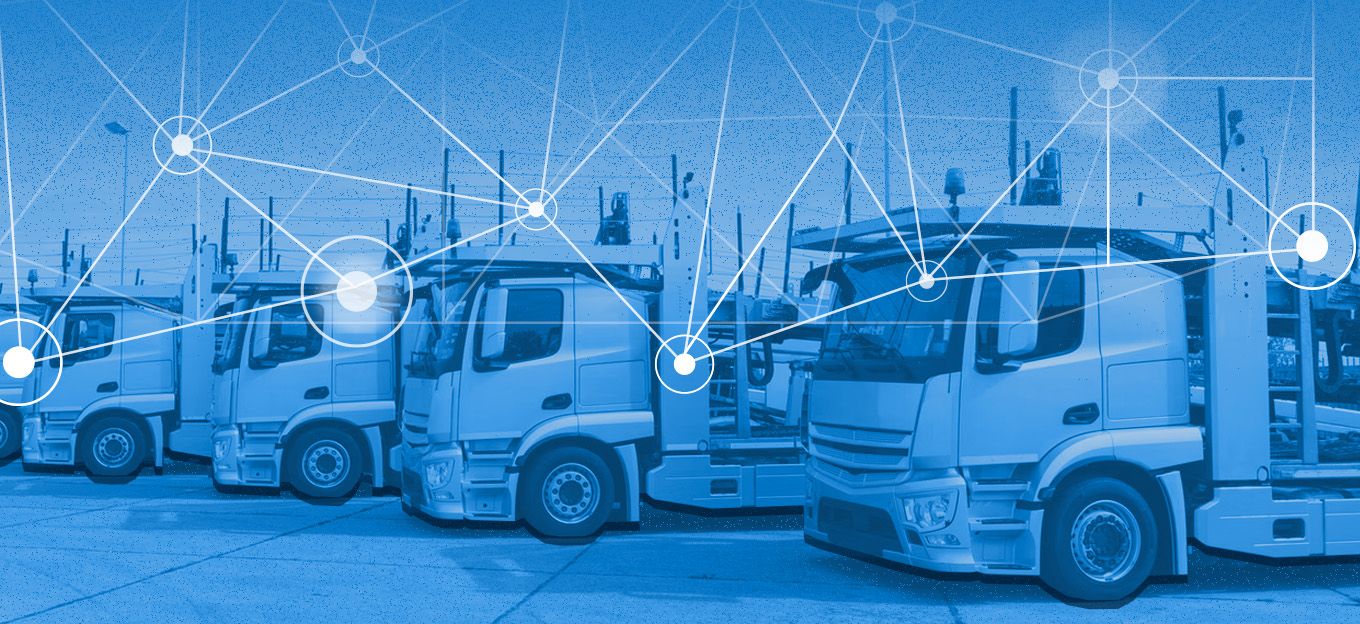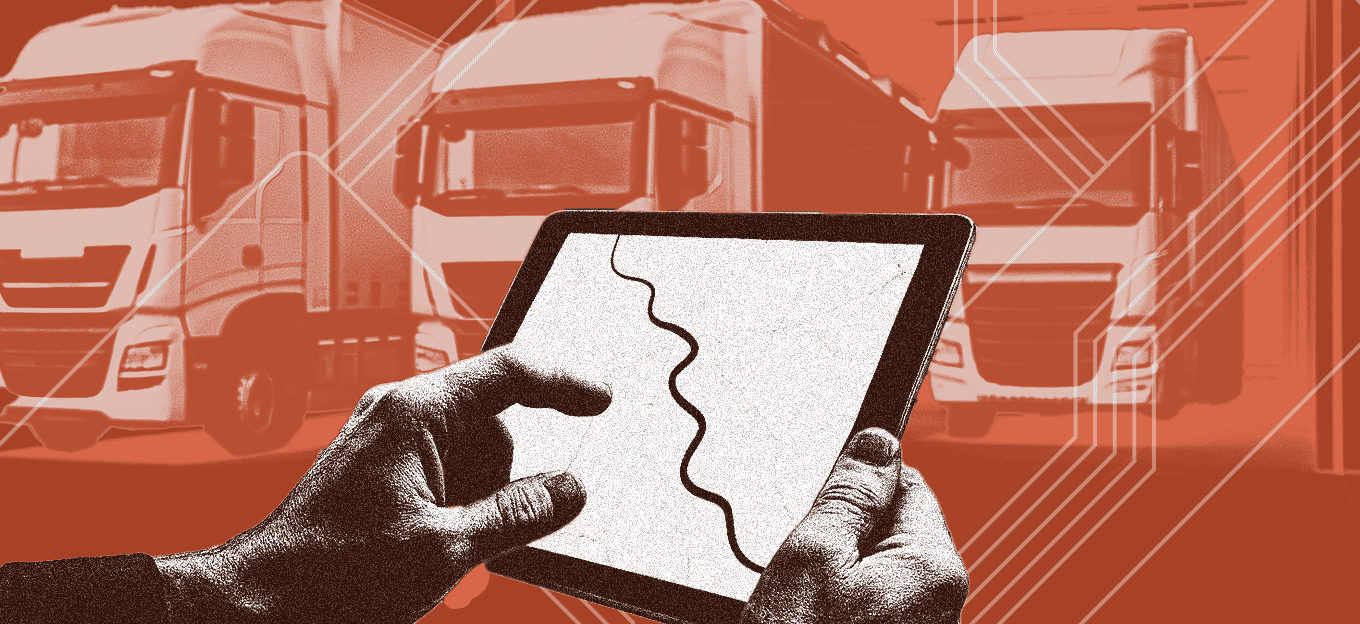Road Intelligence: How Telematics is Driving Vehicle Fleets
Road Intelligence: How Telematics is Driving Vehicle Fleets
- Last Updated: July 16, 2025
Aeris
- Last Updated: July 16, 2025



Whether you’re a vehicle telematics OEM, a solutions provider building smart fleet technologies or an enterprise running a telematics fleet management platform, the demands on your operations are the same: deliver more value with less effort, optimize asset performance and stay ahead of compliance and security requirements.
That’s why your telematics system needs to be built on extensive IoT infrastructure, secure data delivery and scalable APIs that power connected vehicle fleets locally and globally. When you start with the right foundation, you can focus on delivering intelligence and powering business outcomes like faster decision-making, safer operations and lower operating costs.
In this blog, we’ll explore what it takes to deliver world-class vehicle fleet telematics and how to improve performance, enhance safety, simplify compliance and scale with data-driven confidence.
What is Telematics?
Let’s start with the basics: What is telematics? At its core, telematics is the fusion of telecommunications and informatics. It allows vehicles to capture, transmit, and act on operational data in real time. If you’re looking for a quick definition, telematics is a connected system that turns every vehicle into a smart, mobile data source.
So, what does telematics mean for your business? Whether building vehicle fleet solutions or managing one in-house, telematics technology helps you run more efficiently, cut costs and improve safety at scale.
How does telematics work?
So, how does vehicle telematics work? Vehicle telematics transforms raw data from in-vehicle systems into actionable insights. Let’s take a look at the four components that make vehicle telematics work:
- Data Sources — A modern telematics system pulls data from a wide range of embedded sensors and vehicle subsystems, such as:
- Engine Control Unit (ECU)
- Global Positioning Systems (GPS)
- Speed, fuel, temperature, tire pressure and many other sensors
- Driver input systems (e.g., pedal position, braking, etc.)
- Communication Technologies — Once data is collected, it’s transmitted to the cloud for processing using wireless technologies. Cellular wireless (3G, 4G and 5G) is the preferred wireless connectivity for vehicle fleet telematics because it provides broad geographic coverage, high reliability and the bandwidth required for continuous data streams and two-way communication. Satellite, Bluetooth and Wi-Fi may also be used, but cellular remains the backbone of modern vehicle fleet telematics systems, especially for long-haul, regional or widely distributed fleets.
- Cloud Integration — Once data reaches the cloud, it’s processed and enriched using advanced telematics software platforms. These platforms turn raw data into real-time intelligence, surfacing everything from predictive maintenance insights to driver behavior analytics. Through telematics integration, vehicle data can seamlessly connect with dispatch systems, transportation management systems (TMS), enterprise resource planning (ERP) systems, customer portals and other business-critical applications. Integration ensures the intelligence you generate flows directly into the systems that power your operations.
- User Interfaces — Fleet managers, dispatchers and analysts interact with the data through various systems, such as fleet dashboards and mobile apps, real-time alerts and notifications, and reports on driver performance, vehicle health and compliance. These user interfaces surface data and intelligence that helps you realize the value of your telematics system, enabling faster decisions, safer operations and measurable results.
How Telematics Transforms Vehicle Fleet Performance
The right vehicle fleet telematics strategy doesn’t just improve visibility; it reshapes how your organization thinks, plans and operates. When powered by secure, real-time connectivity management and a flexible platform, vehicle telematics becomes a force multiplier across every area of your fleet. Here’s how your fleet benefits:
Increased Operational Efficiency — Telematics eliminates blind spots, giving you full command of your vehicle fleet capacity and movement. With a connected view of your fleet, you can:
- Optimize routes in real-time to reduce mileage and improve the accuracy of estimated arrival times.
- Automate dispatch and scheduling based on location, availability and service demand.
- Maximize load balancing and fleet utilization across geographic zones.
Cost Reduction — Rising vehicle fleet costs aren’t only caused by increasing fuel rates or more frequent repairs; they come from inefficiency. Fleet telematics solutions help you eliminate waste and optimize spend through:
- Reduced fuel consumption by monitoring idle time, speeding and route inefficiencies
- Predictive maintenance based on diagnostic codes, not mileage intervals
- Insurance savings through behavioral risk scoring and usage-based pricing models
Driver Performance & Safety — Telematics tracking offers a continuous monitoring and feedback loop that promotes driver safety and accountability, using:
- Scorecards and behavior profiles based on speed, braking, cornering and more
- Real-time detection of harsh events (e.g., hard braking, rapid acceleration, swerving)
- Coaching tools and incentive programs built on individual performance metrics
These safety tools aren’t just best practices; they’re proving effective. In the first quarter of 2023, the U.S. saw a 3.3% decrease in traffic fatalities, which federal safety officials attribute to the growing use of vehicle telematics to improve driver behavior.
Platform Scalability — As your business grows and evolves, your vehicle fleet telematics system should scale with you, not hold you back. A platform built for growth ensures that performance and visibility expand alongside your operations. With scalable vehicle telematics systems, you can:
- Support tens of thousands of connected assets across geographies.
- Deploy telematics across mixed fleets, including legacy and newer electric vehicles (EVs).
- Integrate seamlessly with your evolving tech stack, including ERPs, TMS and AI tools.
Sustainability & Environmental Impact — Telematics plays a critical role in helping you reduce the environmental footprint of your vehicle fleet and meet rising expectations from customers, regulators and investors. With the right fleet telematics system, you can:
- Monitor emissions and fuel consumption in real-time.
- Reduce idle time and route inefficiencies to cut CO₂ output.
- Track progress toward carbon reduction goals with accurate telematics data.
- Support Environmental, Social and Governance (ESG) reporting through automated logging of sustainability KPIs.
As governments implement stricter emissions regulations and businesses face pressure to decarbonize, vehicle telematics is essential to helping you deploy greener, more accountable fleet operations.
Staying Ahead of Telematics & Fleet Compliance
Regulatory compliance isn’t just about avoiding penalties; it’s about protecting your business, your people and your reputation. With the right vehicle telematics system, you can move from reactive reporting to proactive risk management. Compliance becomes built-in, not bolted-on.
Automating Regulatory Requirements
Vehicle fleet compliance requirements are complex and constantly evolving. Regulations vary by country, state and fleet type and manual processes simply can’t keep up. A modern fleet telematics system helps you take control by automating the documentation, reporting and auditing tasks, such as:
- Electronic Logging Device (ELD) mandates — Track drivers’ hours of service (HoS) and vehicle miles automatically to comply with U.S. Federal Motor Carrier Safety Administration (FMCSA), Transport Canada, and cross-border rules.
- Driver Vehicle Inspection Report (DVIR) — Enable real-time status reports on brakes, lights, tires, wipers, mirrors, steering, suspension and emergency equipment to ensure safety.
- International Fuel Tax Agreement (IFTA) — Accurately capture jurisdictional mileage to simplify quarterly fuel tax filings.
- Maintenance compliance — Monitor service intervals and diagnostic trouble codes (DTCs) to stay ahead of required service and avoid unexpected violations.
When your vehicle telematics platform handles these tasks in the background, your team stays focused on operations, not paperwork.
Security and Data Compliance
Vehicle telematics platforms generate and move sensitive information — from GPS location and driving behavior to vehicle diagnostics and compliance records. Managing that data is about uptime, but it’s also about trust, security and legal responsibility.
Security isn’t only a good practice; it’s now a requirement for federal fleets. The U.S. General Services Administration (GSA) mandates that all federal fleet telematics systems meet Federal Risk and Authorization Management Program (FedRAMP) standards, reinforcing the push for secure, standardized platforms across the public sector.
As expectations rise around privacy and cyber-readiness, your telematics system needs built-in safeguards that keep your data—and your reputation—secure, such as:
- Data privacy regulations — Your platform should align with evolving frameworks like the EU’s General Data Protection Regulation (GDPR) and the U.S. California Consumer Privacy Act (CCPA), which ensure data is collected, stored and used with transparency and user control.
- Encrypted communications — End-to-end encryption—typically using Advanced Encryption Standard (AES) for stored data and Transport Layer Security (TLS) for data in transit—secures vehicle-to-cloud transmissions and protects against tampering, interception and unauthorized monitoring.
- Role-based access controls — Sensitive data, like driver behavior, route history or diagnostic logs, should only be accessible to authorized personnel based on defined roles and responsibilities
- Audit logging — Every action, login or system event is timestamped and traceable, helping you respond quickly and confidently to audits, investigations or security incidents
Security and compliance aren’t only IT concerns; they’re operational fundamentals. When securing fleet telematics with cellular IoT, remember to treat data with the seriousness it deserves so you’re better prepared for whatever comes next.
Always Audit-Ready
Whether you’re subject to a regulatory audit, an internal review or a legal inquiry, audit readiness is a must. With vehicle fleet telematics, you can generate:
- Centralized logs with timestamps and digital signatures
- Automated reports for inspections, tax filing and maintenance tracking
- Alerts and dashboards that flag compliance risks in real time
When your data is already organized, validated and accessible, audits become less stressful and more streamlined.
The Role of Telematics in Fleet Risk Management
Every vehicle fleet faces risk—from data breaches to theft to safety incidents on the road. The difference is how you manage it. A modern fleet telematics system gives you the tools to identify, reduce and respond to risks before they escalate, making your operations more secure and resilient.
Cybersecurity Considerations
As fleets become more connected, they also become more exposed. Hackers don’t only target IT systems; they target transportation systems, so your vehicle telematics platform plays a critical role in protecting against these digital threats. That means addressing:
- Remote access risks, including data interception, spoofing and ransomware
- Encrypted communications that secure data in transit and prevent tampering
- Secure APIs to control who and what can connect to your systems
Vehicle and Asset Security
Your vehicles and high-value assets are constantly in motion, making visibility and response time critical. A telematics vehicle tracking system gives you the tools to detect and respond quickly when something’s wrong, including:
- Real-time GPS tracking to locate and recover stolen vehicles
- Unauthorized use alerts triggered by movement outside of set schedules or permissions
- Geofencing and time-restricted driving to enforce usage policies
Driver and Operational Security
Driver safety directly impacts your company’s performance, liability and brand trust. With telematics, you can build safer fleets through real-time insight and proactive safeguards, such as:
- Panic buttons and SOS signals that give drivers immediate access to emergency support
- Fatigue and distraction monitoring to detect risky behaviors before they lead to incidents
- Driver behavior analytics that allow for coaching, intervention and recognition
The Most Comprehensive IoT Newsletter for Enterprises
Showcasing the highest-quality content, resources, news, and insights from the world of the Internet of Things. Subscribe to remain informed and up-to-date.
New Podcast Episode

What is Hybrid Connectivity for IoT?
Related Articles




